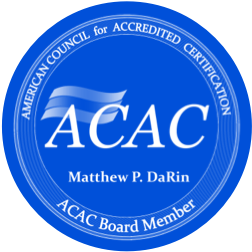Asbestos Removal/Abatement
- Health Effects of Asbestos Exposure
- Sources of Asbestos Pollution
- Asbestos Inspections, Analysis, Surveys
- Asbestos Removal, Abatement
- More Information
Notice to New York State Residents
There are many laws and regulations associated with asbestos removal in residential and commercial buildings which vary by state and city. Never remove a suspected or confirmed asbestos containing material without consulting a licensed asbestos professional who is familiar with the regulations applicable in your area.
Health Effects of Asbestos Exposure
Exposure to airborne asbestos can cause adverse health effects to the affected person. Continued exposure can increase the amount of asbestos fibers that remain in the lung. Fibers embedded in lung tissue over time may cause serious lung diseases including: asbestosis, lung cancer, or mesothelioma. Tobacco smokers who have been exposed to asbestos have a “far greater-than-additive” risk for lung cancer than do nonsmokers who have been exposed, meaning the risk is greater than the individual risks from asbestos and smoking added together.
Signs & Symptoms of Asbestos May Include1
- Shortness of breath (Primary Symptom)
- Persistent, Productive Cough(expels mucus)
- Chest pain, or tightness
- Loss of appetite
- Dry crackling noise in the lungs when inhaling
Major Health Effects2
- Asbestiosis. Asbestosis is a serious, progressive, long-term non-cancer disease of the lungs
- Lung Cancer. Lung cancer is a malignant tumor that invades and obstructs the lung’s air passages. Cigarette smoking greatly increases the likelihood of a person developing lung cancer as the result of asbestos exposure.
- Mesothelioma is a rare cancer which may affect the lining of the lings (plura) or the abdominal contents (peritoneum). Most mesotheliomas are caused by exposure to asbestos.
- (No definitive link has been proven between Asbestos and non-respiratory cancers below, however studies of Asbestos workers suggests a link)
- Gastrointestinal and Colorectal Cancers Studies of asbestos workers suggest that asbestos exposure might be associated with gastrointestinal (esophagus and stomach) and colorectal (colon and rectum) cancers. However, the evidence is unclear.
Sources of Asbestos Pollution
Asbestos has been commonly used as an acoustic insulator, thermal insulation, fire proofing and in other building materials. Asbestos fibers are incredibly strong and have properties that make them resistant to heat. Many products are in use today that contain asbestos. Most of these are materials used in heat and acoustic insulation, fire proofing, and roofing and flooring. In 1989, EPA identified the following asbestos product categories. Many of these materials may still be in use.
- Pipe and Furnace Insulation
- Ceiling and floor tiles
- Decorative Sprays
- Shingles and siding, roofing felt
- Roof Coatings
- Commercial, industrial asbestos friction products
- Disc brake pads, drum brake lining, brake blocks
- Millboard
- EPA’s List of Asbestos Sources
Asbestos Inspections, Analysis, Surveys
When hiring a professional to test, and inspect make sure of the following:
- Make sure that the inspection will include a complete visual examination and the careful collection and lab analysis of samples. If asbestos is present, the inspector should provide a written evaluation describing its location and extent of damage, and give recommendations for correction or prevention.
- Make sure an inspecting firm makes frequent site visits if it is hired to assure that a contractor follows proper procedures and requirements. The inspector may recommend and perform checks after the correction to assure the area has been properly cleaned.
Asbestos Removal, Abatement
Major repairs must be done only by a professional trained in methods for safely handling asbestos. Minor repairs should also be done by professionals since there is always a risk of exposure to fibers when asbestos is disturbed.
Doing minor repairs yourself is not recommended since improper handling of asbestos materials can create a hazard where none existed.
Removal is usually the most expensive method and, unless required by state or local regulations, should be the last option considered in most situations. This is because removal poses the greatest risk of fiber release. However, removal may be required when remodeling or making major changes to your home that will disturb asbestos material. Also, removal may be called for if asbestos material is damaged extensively and cannot be otherwise repaired. Removal is complex and must be done only by a contractor with special training. Improper removal may actually increase the health risks to you and your family.
Asbestos professionals are trained in handling asbestos material. The type of professional will depend on the type of product and what needs to be done to correct the problem. You may hire a general asbestos contractor or, in some cases, a professional trained to handle specific products containing asbestos.
Asbestos professionals can conduct home inspections, take samples of suspected material, assess its condition, and advise about what corrections are needed and who is qualified to make these corrections. Once again, material in good condition need not be sampled unless it is likely to be disturbed. Professional correction or abatement contractors repair or remove asbestos materials.3
More Information
For more information, or to request a professional asbestos consultation:
- Health Effects of Asbestos, Centers of Disease Control, USA, viewed 16 August 2008, <https://www.atsdr.cdc.gov/asbestos/asbestos/health_effects>
- Basic Information:Asbestos, Environmental Protection Agency, USA, viewed 18 August 2008, <https://www.epa.gov/asbestos/pubs/help.html#Info>
- Asbestos in Your Home – Asbestos Professionals, Environmental Protection Agency, USA, viewed 18 August 2008, <https://www.epa.gov/asbestos/pubs/ashome.html#5>



















